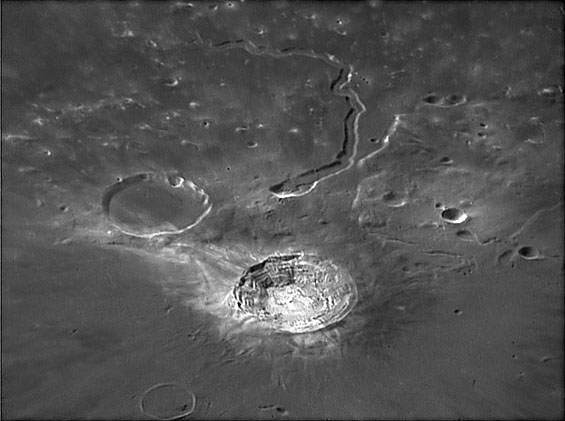Glorious Aristarchus

Explanation:
Speechless awe was my condition when I first saw this image of Aristarchus and Schroter's Valley. This is the best image of this area I have ever seen from an Earth-anchored telescope, and comparable in terms of drama to spectacular Apollo images. What makes this image so owerful is not just the resolution or feeling of peering down into the crater, but the precise modeling of the surface - it looks like every feature that exists is visible. One of the most striking features is the swirl-like ray that extends westward from Aristarchus to Herodotus - this looks like the Reiner Gamma swirl. The westward extension of this ray is consistent with the proposal that Aristarchus was formed by an oblique impact with the projectile coming from the northeast. The interior walls of Aristarchus are a wreath of terraces and a small white peak shares the floor with material that has slid off the walls. Within the Cobra Head of Schroter's Valley the beginning of the smaller incised sinuous rille is clearly visible - Rukl's Atlas states that this inner rilles is not visible from Earth, but that was pre-Wes! Another Cobra Head rille occurs north of Aristarchus near the bright crater Vaisala. Wow, what a picture!
—
Chuck Wood
Technical Details:
Nov 5, 2004. Starmaster 18", DMK-21F04 Firewire camera, 30FPS, stack of 1000 frames from 1750
Related Links:
Apollo 15 View
Rukl Atlas of the Moon, Sheet 18
